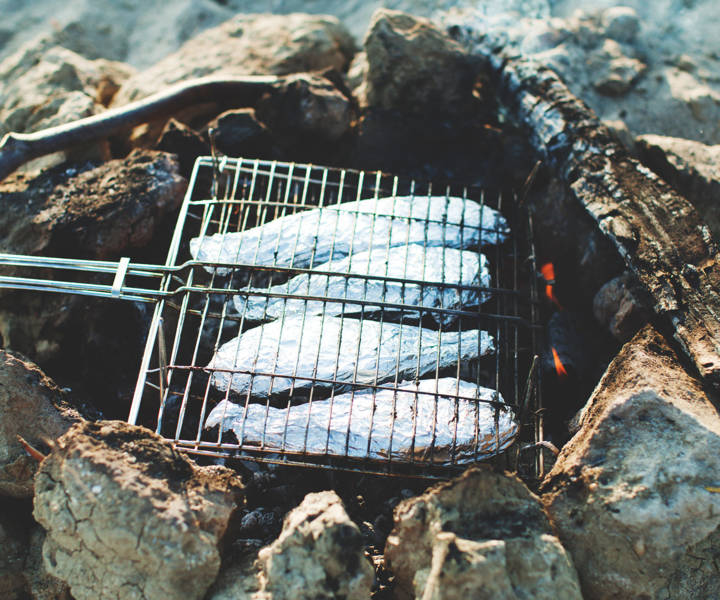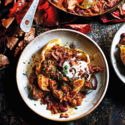Food
5 things you need to know about wild cooking
by Helen Renshaw

Cooking over fire makes food taste amazing, boosts wellbeing and connects you to nature. Here's what you need to know before you start.
1. GET PERMISSION
In England and Wales, you need the landowner’s permission to build a fire in open country – that could be the council, National Trust or a private landowner. Check out nearlywildcamping.org for a national network of locations that allow wild cooking in secluded places. In Scotland, open fires are allowed but you must follow certain guidelines. For more information, check out outdooraccess-scotland.scot.
2. PUT SAFETY FIRST
Keep open fires small, under control and supervised. Never light a fire during a prolonged dry spell, on peaty ground where fire can easily take hold, or near buildings.
3. CHOOSE YOUR KIT
There is loads of wild cooking equipment to choose from. Here are three pieces of clever kit to consider:
● Dutch oven – a heavy-duty, fire-resistant pot that can be suspended over an open fire on a tripod, placed on a cooking grate or directly on to the embers.
● Portable barbecue – there is a huge range available, including easy-carry folding versions.
● Kelly Kettle – boils water fast using combustibles such as twigs, cones or dried grass. Comes with a pot support for cooking quick meals such as soup.
4. LIGHT YOUR FIRE
You need tinder and kindling for a campfire. Start with dry leaves or grass as tinder for the initial flame, place small twigs above in a tepee shape. Light and wait for the twigs to burn strongly before adding bigger sticks and logs to the fire.
5. LEAVE NO TRACE
To avoid scorch marks, keep fires contained unless on a space designated for open fires. To safely put out a fire, douse with water, add soil to the water and stir into embers until they are no longer hot.

Don't miss!
Our best camping recipes to cook outside.












